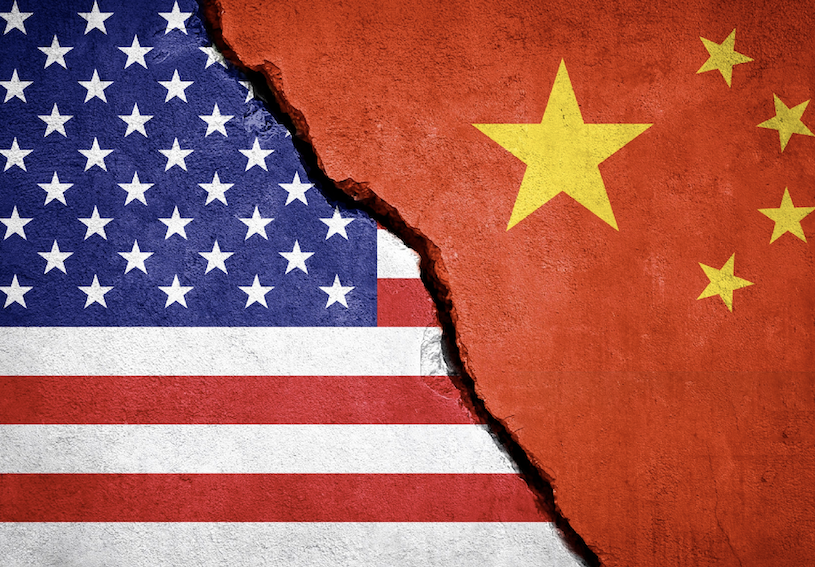As of April 9, 2025, the escalating US-China trade war, fueled by steep tariffs and retaliatory measures, has sent shockwaves through global markets, with USA-listed companies bearing some of the heaviest blows. With President Donald Trump imposing a staggering 104% tariff on Chinese imports and China responding with an 84% levy on US goods, industries reliant on cross-border supply chains and exports are reeling. This article dives into the American companies hit hardest by the trade war, exploring the real-world impacts on their operations, stock prices, and long-term prospects.
Apple ($AAPL): A Tech Titan Under Siege
Apple, the world’s most valuable publicly traded company, is caught in the crosshairs of the trade war. With over 90% of its manufacturing based in China, the $AAPL stock plummeted 8.8% on a single day in early April, erasing over $300 billion in market capitalization. Analysts estimate that the 104% tariffs could saddle Apple with nearly $40 billion in additional costs annually, potentially slashing operating profits by a third if the company absorbs them. The iPhone, a flagship product, faces price hikes that could dampen consumer demand, while China’s retaliatory tariffs threaten Apple’s significant market share in the world’s largest smartphone market. The stakes are high for $AAPL as it navigates this tariff-induced storm.
Boeing ($BA): Flying Into Turbulence
Boeing, a cornerstone of American aerospace, is another casualty of the trade war’s escalation. China’s 84% tariffs on US goods directly target aircraft, making $BA’s planes far more expensive than competitors like Airbus and China’s COMAC. Already strained by past safety scandals and delivery delays, Boeing now faces a potential freeze on its 45-81 plane deliveries scheduled for 2025-2027 to China’s top airlines. The company’s reliance on China—one of its largest export markets—means these tariffs could slash revenues and cede market share to rivals. $BA’s stock has taken a hit, reflecting investor fears of a prolonged trade standoff.
Caterpillar ($CAT): Digging a Deeper Hole
Caterpillar, a titan in farm and construction equipment, is feeling the pinch from both sides of the tariff war. The $CAT stock is under pressure as China’s 84% tariffs compound an earlier 10% levy, targeting a sector already battered by slumping agricultural exports. China, a key market for $CAT’s machinery, buys billions in US equipment annually, but these tariffs threaten to choke demand. On the import side, higher costs for steel and components from China—vital to $CAT’s supply chain—could erode profit margins further. Analysts warn that prolonged trade tensions could force Caterpillar to rethink its global manufacturing footprint, a costly and uncertain pivot.
Deere & Co. ($DE): Harvesting Losses
The agricultural sector, a long-standing victim of trade wars, sees Deere & Co. at the forefront of the fallout. $DE, a leading maker of tractors and farm equipment, is hit hard by China’s tariffs on US soybeans, pork, and other agricultural goods—products that drive demand for its machinery. With China historically snapping up over half of US soybean exports (valued at $15 billion), the 84% tariffs have redirected buyers to Brazil, leaving American farmers—and by extension, $DE—high and dry. The company has already cut production by 20% in response to earlier trade disruptions, and the latest tariffs could deepen those cuts, dragging $DE’s stock and outlook into the red.
Broader Implications for USA-Listed Firms
Beyond these giants, the ripple effects are stark. Tech firms like Intel ($INTC) and NVIDIA ($NVDA), reliant on China for semiconductor sales, face export hurdles, while retailers like Walmart ($WMT) and Nike ($NKE) grapple with rising costs for imported goods. The S&P 500 has suffered its worst losses since the 1950s, with trillions wiped off market values since Trump’s tariff announcement on April 2. American consumers, meanwhile, brace for higher prices on everything from smartphones to tractors, as companies weigh passing on costs or eating into profits.
A Human Perspective on a Corporate Crisis
Behind the stock tickers and balance sheets are real stakes: jobs, livelihoods, and economic stability. Farmers in the Midwest, already stung by lost export markets, see $DE’s woes as a reflection of their own. Factory workers at $CAT plants worry about layoffs if orders dry up. Even $AAPL’s retail staff feel the uncertainty as iPhone sales forecasts dim. This trade war isn’t just a numbers game—it’s a human story of adaptation and resilience in the face of policy upheaval.
Looking Ahead: Can These Companies Recover?
The path forward is murky. Some firms, like $AAPL, might accelerate moves to diversify manufacturing—India and Vietnam are on the radar, though Trump’s tariffs on those nations (26% and 46%, respectively) complicate the shift. $BA could lean harder into domestic or European markets, but losing China’s growth potential stings. $CAT and $DE, tied to agriculture and construction cycles, may face years of adjustment if trade tensions persist. Investors, meanwhile, are left guessing: will Trump’s tariffs force a renegotiation, or are we in for a prolonged economic slugfest?
The US-China trade war, now at its fiercest, has turned USA-listed companies into unwilling frontline soldiers. For $AAPL, $BA, $CAT, $DE, and others, the battle is about survival—navigating tariffs, protecting profits, and preserving their place in a fracturing global economy. As the dust settles, one thing is clear: the casualties of this war extend far beyond the headlines.
Shayne Heffernan









